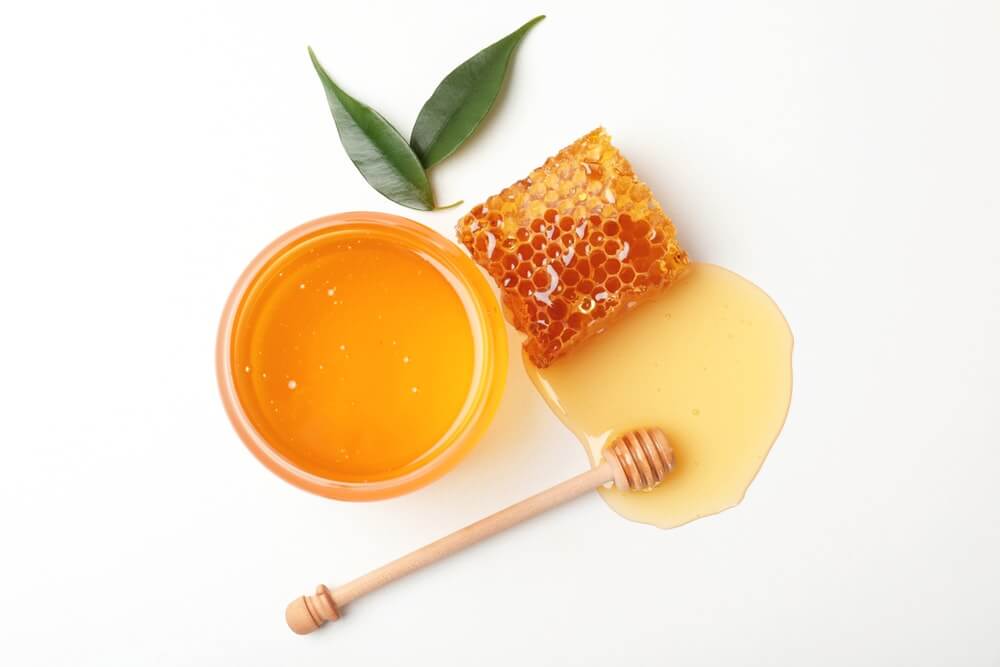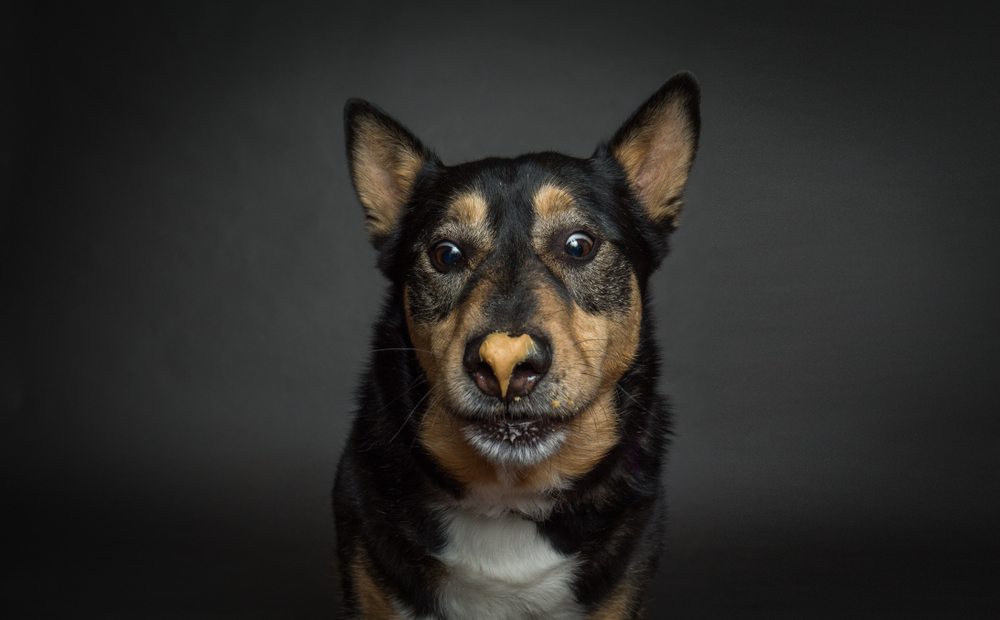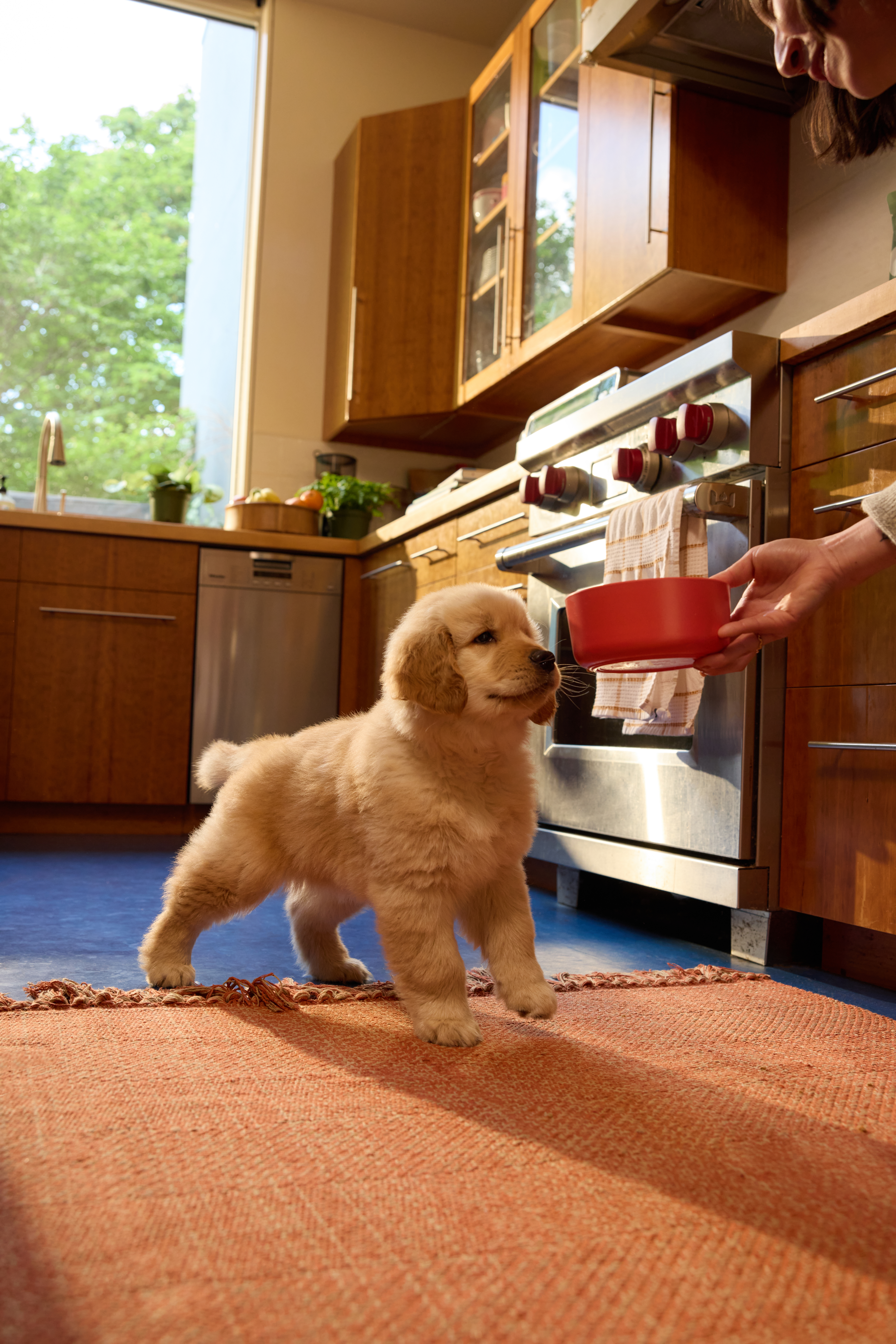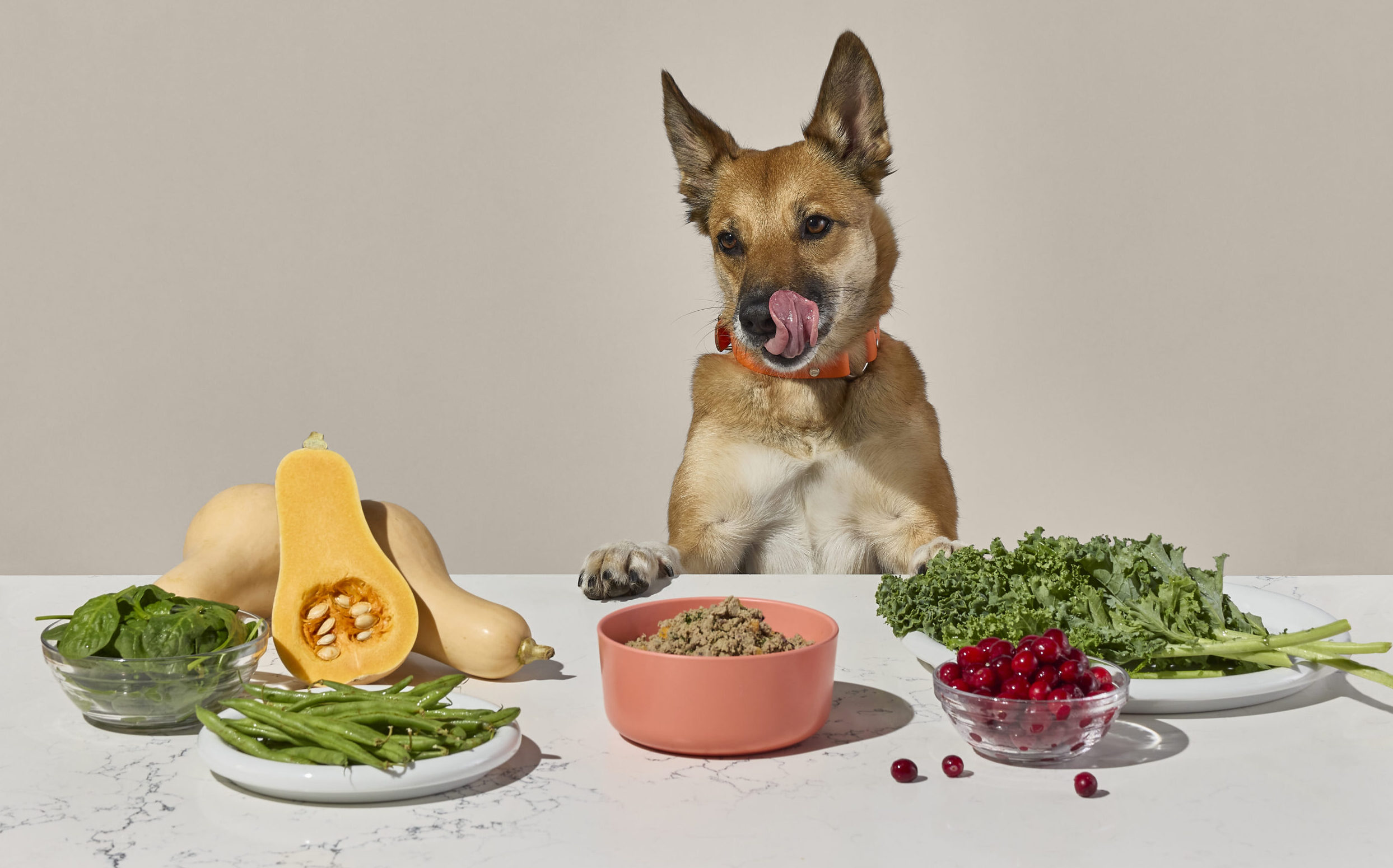Hey Ollie blog readers! We’re offering you an exclusive 60% OFF your starter box! Try now!
Raw honey is an all-natural treat. It’s harvested directly from beehives and not heated above 118 degrees Fahrenheit for any reason. It contains pollen and if it’s not strained, you may even see bits of beeswax remaining. Some vendors or local beekeepers may even sell their raw honey with pieces of honeycomb inside.
There are many uses for honey for humans including sweetening a cup of tea, soothing a sore throat or cough and helping to lessen the symptoms of seasonal allergies. But can you share honey with your dog? Or more importantly, should you?
Can Dogs Eat Honey?
Yes, dogs can have honey—but only in small amounts. This natural sweetener contains trace nutrients like antioxidants, enzymes, and vitamins B and C, which can support immune health and soothe minor irritations. Some pet parents even turn to raw honey as a gentle remedy for seasonal allergies or digestive discomfort.
But here’s the catch: honey is still sugar. Too much can lead to weight gain, blood sugar spikes, and is generally not recommended for dogs with diabetes or those struggling with obesity. Like any treat, it’s best served in moderation and as part of a well-balanced diet.
Pet experts and vets agree, if you’re going to share honey with your dog, choose raw, unfiltered honey instead of processed versions to make sure the honey is as safe as possible. Avoid anything that lists additives or artificial sweeteners—especially xylitol, which is highly toxic to dogs.
As always, start with a tiny amount and keep an eye out for any signs of stomach upset or allergic reaction. For most healthy dogs, a lick of raw honey here and there can be a safe, tasty addition to their treat list. Many dog treats will include honey in small amounts as well as some dog food brands will include honey to provide the additional health benefits to adult dogs.
The short answer is that yes, in small quantities raw honey has many of the same health benefits for dogs as it does for humans.
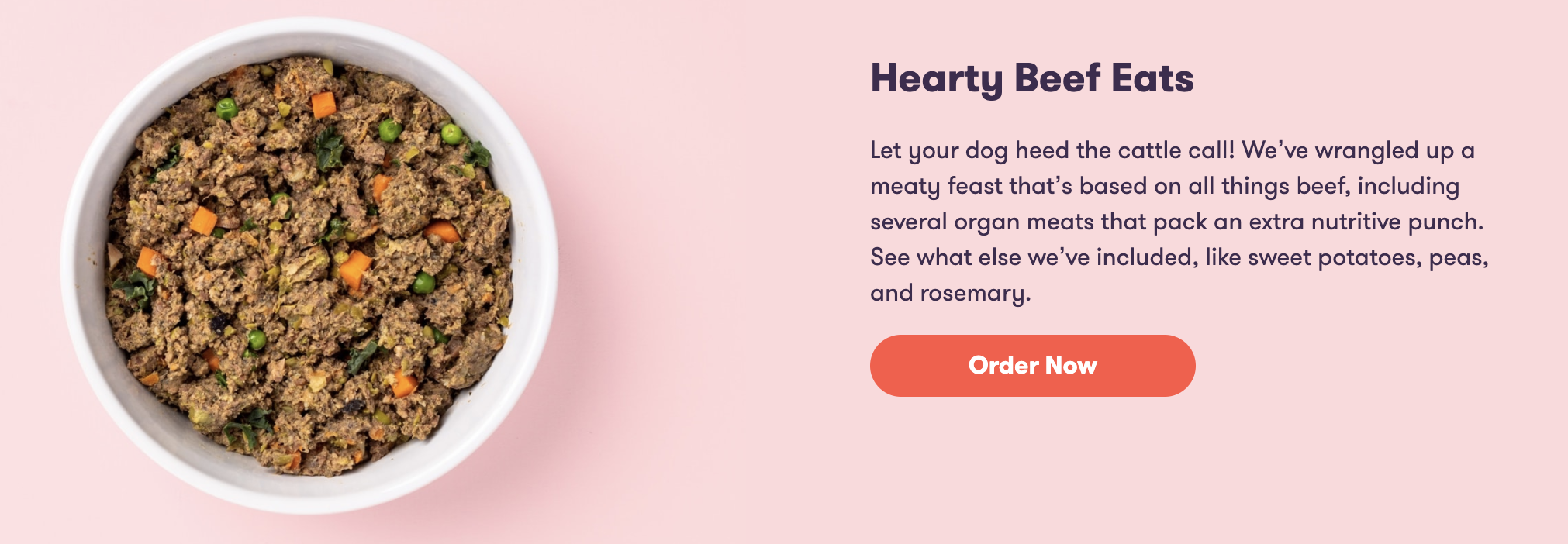
Is Honey Good For Dogs? Is It Safe?
Honey can offer some gentle health benefits for dogs—when used correctly and is typically considered safe when served properly. It’s packed with naturally occurring antioxidants and enzymes that may support the immune system, fight inflammation, and help with healing.
Some pet parents use raw local honey to help dogs with mild seasonal allergies. The theory is that exposure to trace amounts of local pollen may help the body build tolerance—though research on this in dogs is still limited. Honey is also sometimes used to soothe minor throat irritation or help dogs recover from kennel cough.
Additionally, honey has antibacterial properties and has been used topically (under veterinary guidance) to support the healing of small wounds or hot spots.
Still, honey isn’t a miracle cure. It’s not a replacement for proper nutrition, medication, or veterinary care. But as a small, natural supplement, it can offer gentle support for some dogs—especially when part of a healthy, balanced routine.
Health Benefits of Feeding Honey To Your Dog
Honey can provide a variety of health benefits to your dog when served correctly. Below are a few of the most common benefits of honey and raw honey for dogs.
Boost their energy
Honey like any other simple carbohydrates can give your pet an energy boost. As the sugars in the honey are broken down your pet may get a burst of energy. This is a great boost for athletic dogs before a run or agility competitors before a training session or competition.
Help dogs who suffer from allergies
Raw honey can help dogs who suffer from allergies. In order for this to be effective not only does the honey need to be raw, it also needs to be locally-sourced. This is because local honey will contain the same pollens that are found in the dog’s environment and will therefore lessen their sensitivity over time. As a note, honey will only help with environmental allergies like pollen and not food allergies. If you suspect your pet has food allergies, adding honey will not help lessen the effect of those allergies. You’ll still want to be sure to eliminate dietary allergens and consult your veterinarian.
Help soothe a kennel cough
Honey may also benefit pups suffering from kennel cough. For this particular situation Manuka honey from Australia might be your best bet. Manuka honey has the highest antibacterial properties of any honey in the world. One caution, it also comes at a significantly higher price tag!
Help with gastrointestinal issues
For pets with digestive issues honey can also be soothing for an upset belly. Honey is helpful for minor stomach upset like after eating too much fresh grass or a treat that didn’t agree with your dog. If your pet’s upset stomach persists seek medical treatment and do not continue to feed honey.
Speed healing of wounds, cuts and scrapes
Another use for honey is to help heal wounds. If you are dealing with a deep wound or puncture wound be sure your pet sees a veterinarian to close and treat the wound properly. For minor burns, scrapes or even hot spots a thin layer of honey can speed healing due to its antibiotic properties. Once you spread the honey on the affected area you want to cover with a dressing, so your pet doesn’t lick the honey off or leave a sticky mess all over your home.

Can Honey Help With Allergies In Dogs?
Honey has a long history as a natural remedy for humans—and some dog parents are curious if it might help with allergies in their pups, too. Specifically, many ask whether raw local honey can reduce symptoms tied to seasonal or environmental allergens, like pollen.
There’s a theory behind this idea, and it’s grounded in how the immune system responds to repeated exposure in small doses. Essentially, it’s a form of natural desensitization.
As Dr. Gary Richter, DVM, explains:
“People use honey and bee pollen to desensitize people and animals from environmental allergens, such as pollen. The theory is that honey or bee pollen contains small amounts of the thing the person or animal is allergic to, and by giving them these products, we can desensitize patients to allergens.”
This approach may help dogs who suffer from mild environmental allergies. The idea is that raw, local honey contains trace amounts of local pollen, which could help the immune system become less reactive over time. However, research in dogs is still limited, and not all veterinarians agree on its effectiveness as a primary treatment.
That said, honey does offer other potential benefits. Its natural anti-inflammatory and antimicrobial properties may soothe irritated throats or reduce minor inflammation triggered by post-nasal drip. For dogs who experience seasonal coughing or sneezing, a small amount of raw honey may offer mild relief.
If you’re thinking about trying honey to support your dog’s allergy symptoms:
- Choose raw, local honey—processed honey won’t contain the trace pollen needed for this method
- Offer no more than ¼ to ½ teaspoon depending on your dog’s size and weight
- Monitor your dog for any signs of improvement or digestive upset
- Avoid honey if your dog has diabetes, is overweight, or has a compromised immune system
Keep in mind, honey isn’t a replacement for veterinary care or prescribed allergy medications. But for some dogs, it can be a helpful addition to an overall wellness plan—especially when paired with a diet that supports immune health and reduces inflammatory triggers.
When you should you avoid feeding raw honey to your dog?
Like any other addition to your pet’s diet, honey is not appropriate for all dogs. There are some important factors to consider before giving your pet this sweet snack. Based on vet advise and veterinary care experts, it is best to avoid honey if your dog is struggling with diabeties, is overweight, has high blood sugar, or a few other ailments.
If your dog is overweight:
Since honey is a natural form of sugar it is high in calories and should be used sparingly. Too much honey (or sugar of any kind) can lead to weight gain. You also may wish to brush your dog’s teeth after feeding honey — just like in humans, sugar can lead to tooth decay in canines as well.
If your dog is diabetic:
Diabetic dogs should not consume honey as it is high on the glycemic index and can raise their blood sugar to unhealthy levels. In this case the risks outweigh the benefits of sharing honey with your dog. If you need to raise your dog’s blood sugar however, honey could be a safe and effective method. You’ll want to check with your dog’s vet before ever providing this sweet treat to your diabetic pet.
If your dog is elderly, a young puppy or has a compromised immune system:
Another time you may want to avoid raw honey is in puppies, elderly dogs or dogs with compromised immune systems. This is because honey contains bacterial spores. The bacteria can be beneficial for healthy dogs, but can make dogs with immature or compromised immune systems ill. Just like babies under a year old cannot eat raw honey, the same rules apply to our dogs. Check with your vet before giving your young dog honey, he or she can help you determine the best time to start incorporating honey into your dog’s diet. It is also recommended to avoid unpasteurized honey if you aren’t aware of how clean the honey source is.
If your dog is allergic to bees:
Dogs who are allergic to bees should also avoid eating honey as it can also cause an allergic reaction.
If you have any questions or concerns about feeding your dog raw honey, check with your veterinarian for recommendations for your specific pet. He or she will have an understanding of your pet’s health history and be better able to help you decide if it is right for your dog.
How much honey should your dog eat?
A teaspoon of raw honey contains about 70 calories and 17 grams of sugar. This is a significant amount of sugar for you pet. You’ll want to limit honey to a teaspoon or less per day.
For smaller dogs a teaspoon may still be too much, be sure to ask your vet for a recommended serving size specific to your dog. If your small dog occasionally consumed a full teaspoon of honey it should not be harmful, you just don’t want to give them too many calories or too much sugar in one serving.

How to feed honey to your dog
Once you’ve determined how much honey your pet can safely eat, you have to decide how you will feed honey to your dog. While you could just allow them to lick it off a spoon or from their dish, there are some other creative ways to add raw honey to your dog’s diet.
- Spread a thin layer of honey on their favorite treat. This will make it even more special. Be careful not to let them eat it on their bed or your couch. You don’t want to be cleaning up a sticky mess if your dog drops it.
- Put some honey on a slice of apple, banana, or other pet-safe fruit Mix with some pumpkin puree, cream cheese, plain yogurt, or peanut butter. You can even layer some of these ingredients into a little parfait for a fun and fancy treat. Try to layer a teaspoon of plain yogurt, a teaspoon of pumpkin and a drizzle of honey in a small dish. You can garnish with a biscuit or crush up a treat for a crunchy ‘topping’ if you’re feeling especially decadent.
- Let your dog lick it off a spoon or spatula. Coat the back of a large wooden spoon or a spatula with a thin layer of honey. This could also be a fun activity to use if your dog is nervous about a bath or nail clipping. A tasty treat might be the perfect distraction to help your pup relax!
- Create an herbal honey for your dog. This article in Whole Dog Journal offers instructions for mixing honey with lemon balm for added health benefits.
Raw honey has a long shelf life and should be stored in a sealed, air-tight container. You want to keep your raw honey in a cool, dry place. Raw honey sometimes crystallizes, due to the overabundance of sugar. This is a perfectly natural occurrence and does not mean your honey has gone bad or you shouldn’t give it to your pet. You can simply soak the jar in some warm water to bring it back to its syrupy consistency. You don’t want to boil the honey as the high heat can spoil it.
Note that if you bake with honey you may lose some of the health benefits of raw honey. This is because heating it will kill the good bacteria that provide honey with its health benefits. Something you’ll want to take into consideration if you are feeding your pet honey to combat allergies or for the antibiotic properties of the honey.
Next time you go to make yourself a cup of tea or peanut butter and honey sandwich, you just might be tempted to share with your pup friend — and that might be a great decision for their health too!
Sharing a favorite food with some potential health benefits could be a great bonding experience for you and your dog. Having a great relationship with your pet can make both of you happier and healthier.
How Often Can Dogs Have Honey Without Gaining Weight?
A little honey goes a long way—especially for dogs. Because honey is high in natural sugars, it should be treated like an occasional treat, not a daily supplement.
For healthy adult dogs, offering ½ teaspoon of honey once or twice a week is generally considered safe. Small breeds may need even less, while larger dogs can tolerate slightly more—but the key is moderation.
If your dog is already on a weight management plan or has a tendency to gain easily, it’s best to limit honey to rare occasions, if at all. Think of it the same way you’d think of dessert: fine in small amounts, but not something that should show up after every meal.
If you’re using honey for a specific reason—like soothing a sore throat or helping with allergies—it’s best to check in with your vet first. They can help you find the right dose and schedule based on your dog’s size, activity level, and overall health.
The Ollie blog is devoted to helping pet parents lead healthier lives with their pups. If you want to learn more about our fresh, human-grade food, check out MyOllie.com.
Tagged As:

The nutrition your dog needs,
the food they want.

Enjoying our articles? Subscribe our Newsletters and get new articles directly to your inbox
You might also like
21 July 2025
6 MINS READ
Can Dogs Eat Nuts? Which Nuts Are Safe & Serving Guide
Can dogs have nuts? Some nuts are fine in moderation, but others can cause serious harm. This quick guide breaks down which nuts are safe for dogs, which to skip, and how to feed nut butters respon…
18 July 2025
4 MINS READ
New Puppy Diet Recommendations for Healthy, Happy Growth
As a new pup parent, one of the biggest ways you can support your puppy’s long-term health is by providing the right nutrition. A puppy’s dietary needs are different from an adult dog’s, and…
by Ollie Pets
18 July 2025
5 MINS READ
How Human-Grade Dog Food Benefits Your Pup’s Health and Happiness
You’ve likely heard the term “human-grade” dog food, but what does it really mean, and is it worth it? Choosing human-grade food can be a significant investment for your dog’s long-term he…
by Ollie Pets
